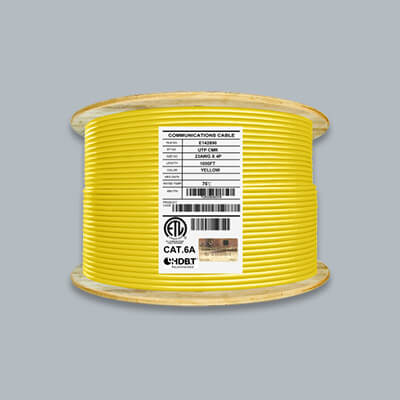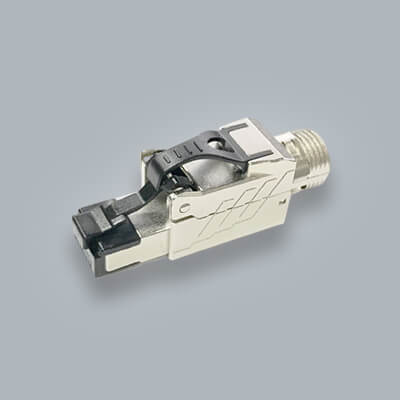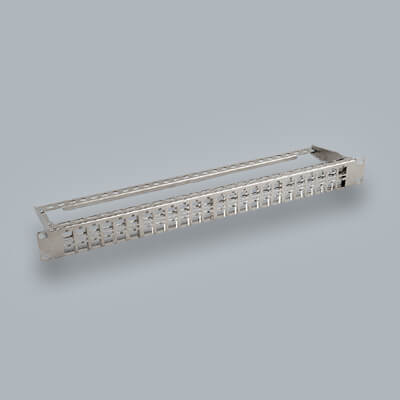The Difference Between Cat6 vs Cat6e
With the New Year upon us many of you will be looking to upgrade your home or business network. Cable technology is on the move and keeping yourself up to speed and future proofed is a safe way to ensure your network is ready to go for many years to come. One of the most common ethernet cables in the market today is Cat6 cable. You might not know but Cat6 cable can have a couple different versions to it. The alternative versions to Cat6 cable is Cat6e. In this article we will cover the differences between Cat6 vs Cat6e cables.
What is Cat6 Cable?
Cat6 cable is an advancement on long standing networking cable: Cat5e. It advances on Cat5e cable by having a higher twist rate and having better performance against near end crosstalk. They are very similar in function but Cat5e and Cat6 do have their differences. Cat6 cable has a performance spec of:
- 250MHz Data Transmission
- 1Gb Data Rate
- Channel Length of 328 Feet (100 meters)
- Performance tested to 550MHz
You'll often find Cat6 cables coming in 23 to 24AWG sizes. Also coming in unshielded, shielded, outdoor, riser, stranded and plenum types. Just about anywhere you want to run the cable Category 6 will have an option for you.
Not only does Cat6 give you increased performance it can give you some future proofing as well ! Under ideal conditions (proper terminations, the right environment and right cable) Cat6 cable can achieve 10Gb up to around 33-55 meters. For the majority of people this is just enough length to run around the house. This cable is becoming very popular partly because of that fact. However, it's important to remember that Cat6 cable is not guaranteed to be able to do 10Gb. This is possible under ideal conditions as previously stated. Cat6 cable is built for 1Gb applications and doubling the frequency compared to Cat5e cables.
You might be thinking, Ok so where does Cat6e come in to play?
Well Cat6e cable is particular to only some manufactures. Elite Cable being one of them! Throughout the years we've come across many different needs and preferences in the networking industry. The simple fact is that each installer has their personal preference and way of doing things. This includes the way they terminate cables and what they like to work with.
From Cat5e to the creation of Cat6 cables, was the inclusion of a spline.
A spline is a cross separator that is ran in the middle of the cable. This spline / cross separator is used to separate each individual twisted pair. By increasing the separation of the twisted pairs this gives you better performance against near end crosstalk. Crosstalk can be signal noise between the pairs that can reduce signal strength. So to better perform against this the spline was introduced.
We bring up the fact about personal preference because the spline can be difficult to work with sometimes. If you're coming from Cat5e or earlier you might find it just a tad trickier to terminate it with. But having the spline is important. So to solve some of these problems and increase options to our customers we provide two difference versions. A Cat6 cable with a spline and a Cat6 cable without a spline.
This is where Cat6e comes in to play.
What is Cat6e Cable?
To designate the difference between Cat6 cables with and without a spline we kept the Cat6 cable without a spline as Cat6 and call Cat6 cable with a spline as Cat6e.
The most important thing in by doing this it to make sure that our cables meet the performance specs of Cat6 cable as designated by ISO/IEC and TIA.
Cat6 cable (Link Class E) must be able to perform to 1Gb and 250 MHZ with a recommended channel length of 100 meters. That is their spec.
Both our Elite Cat6 and Cat6e cables meet this specification. Although Cat6e cable is not a standardized class by TIA, rest assured that our cables meet this specification and performance.
Our Cat6e cables has a performance spec of:
- 250 MHZ
- 1Gb
- Channel Length of 328 Feet (100 meters)
- Performance tested to 600MHz
Check out this image for another view of Cat6 and Cat6e cables similarities and differences:

Let's now get into a little more detail just how these cables can perform to their specification.
What Makes Cat6 and Cat6e Cables Function
Let's start again with our Cat6 cable. Our Cat6 unshielded cables in (Riser and Plenum) are manufactured with more insulation around the twisted pairs. The insulation acts as an alternative to the spline. The increased amount of insulation compared to other Cat6 cables you will find in the market gives it the performance it needs against cross talk. The more insulation means the more distance there is between the pairs. This option of cable gives you the flexibility you want in your cable if you prefer not to terminate with a spline but want Cat6.
Here's a test report to our Cat6 cable for reference

Our Cat6e cables come manufactured with a spline in the middle. The spline / cross separator is what gives the cable better performance against near end crosstalk.
Here's a test report for our Cat6e cable for reference

To recap: When referring to the difference between Cat6 vs Cat6e we look at their structure for the differences. Elite Cat6 cable does not have a spline but has increased insulation. Elite Cat6e cable has a spline to perform against crosstalk. Both of these cables achieve 250MHz and 1Gb up to 100 meters (328 Feet). They are also tested above spec for optimal performance and extra headroom. Giving you the quality you desire. In addition to this under ideal conditions these two cables can achieve 10Gb or close to it. This will depend on circumstances involving the cables, area and terminations.
Let's now look in to some of the other common questions that come with these two cables.
Common Cat6 vs Cat6e Questions
Do Cat6 and Cat6e cables use different Keystone Jacks?
Cat6 and Cat6 cables such as stranded (cm), riser and plenum do not use different keystone jacks. You want to match up the correct keystone jack type to the cable. So if you are using unshielded cable then you want to use unshielded keystone jacks. Cat6 and Cat6e cables would use these types of Cat6 jacks for example. The only thing you will decide on is if you want 90 degree or 180 degree designs. For help on getting the right keystone jack head on over to how to choose a keystone jack.
Do Cat6 and Cat6e cables use different RJ45's?
Choosing the right RJ45 for your cable comes in a couple different ways. You want to match up the RJ45 to the right category of cable you are using. However for Cat6 and Cat6e cables they both use Cat6 RJ45's. There is no designated Cat6e connector. Cat6e cable has a different structure but uses the same type of RJ45's a Cat6 cable would. So using any 8P8C Cat6 RJ45 will be fine for these cables. Keep in mind here to watch out for the AWG size ratings of the plugs. Match up your cables size to the plug compatibility size. You also want to get stranded RJ45s for stranded cable and solid plugs for solid cable.
Which Patch Panel is Recommended?
For patch panels you want to use Cat6 versions here. Depending on your type of cable whether it be shielded or unshielded will determine which patch panel you use. Common patch panels for homes and business are 24 port and 48 ports. These can mount to the wall and networking racks.
To recap: on connectivity you want to use Cat6 connectors for Cat6 and Cat6e cables. This includes:
- Keystone Jacks
- RJ45's
- Field Termination Plugs
- Patch Panels
- Strain Relief Boots
Your need and network setup will determine which connectors you will need.
Shop For Cat6 & Cat6e Cable
Cat6 Cables: Power gigabit speeds up to 328 feet in your home or business. Prioritize safety with our UL Listed cables for top of the line performance. Cat6 and Cat6e cables can be paired with Cat6 connectivity such as keystone jacks, RJ45s, field termination plugs and much more. Available in shielded and unshielded versions, Cat6 is ready for any network.
Shop Cat6 and Cat6e Cable
We hope this article on the difference between Cat6 vs Cat6e cable was helpful. Both of these cables are great options whether you're looking to upgrade your home or business network. At shorter distances they can give you some additional future proofing benefits compared to older categories. Whether you prefer to work with a spline or without, Elite cable has the options you need to bring your network up to speed.






This article is the best explanation I found for the differences between Cat6 and Cat6e cables. Very informative and well wrttine giving additional information as well. Unfortunately, I will purchase these cables in my local country, but if I had to choose, I would purchase from you all just because of this article.
Cheers and keep up the good work do educating people.
This article is the best explanation I found for the differences between Cat6 and Cat6e cables. Very informative and well wrttine giving additional information as well. Unfortunately, I will purchase these cables in my local country, but if I had to choose, I would purchase from you all just because of this article.
Cheers and keep up the good work do educating people.
Hello Gina,
Thank you for your question. You are correct that you can use our Cat6 12 Port vertical patch panel with our Cat6e wire. Let us know if there’s anything else we can help with
Hi there,
I found your article regarding the difference between cat6 and cat6e cables super informative! Thank you. However, I am still a bit confused. May I get advice, or if not, could you please let me know who I could contact regarding this? My contractor needs me to purchase a mini 12-port vertical patch panel. Our wires are cat6e. What vertical patch panel would I use? It seems from your article, that I could use a cat6 one, is this correct? Thank you!
Best,
Gina